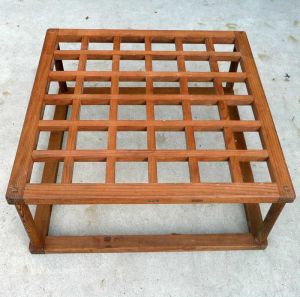Kitchen 台所 だいどころ
What to say about a Japanese kitchen? Well, quite a lot really. There are a few major differences that Japanese kitchens share with their “western” counterparts. If you quickly scroll up and down, you would notice some things in common between all these pictures:
- You cannot see outside.
- The neon light is on all day long.
- The string with the bead to switch on the light.
- The bars on the windows (where to go in case of fire?)
- The dining table in the middle.
What you cannot see in the picture, but what you do experience when in Japan: the absence of men in the kitchen. It is a woman’s domain. Having said that: we know of a couple (the man was a high powered courtroom judge), where the man would come home later at night and he would cook dinner for the whole family (teenager family) and she would sit on a chair next to the counter and talk to him about all sorts of household matters, life in general, sometimes about what she had happened in the neighbourhood, but most of all “the meaning of life”. He was an amazing cook and she loved it.
This picture has all the ingredients mentioned above. But the place has a friendliness and a homeliness and a cleanliness next-to-none. This is the kitchen where a happy housewife lives and – let’s face it – if Mum’s happy, the family is happy!
This is a more modern kitchen, but you can see that the within-arms-reach has already moving in. It is the practicality of every day.
This kitchen still has a more old-fashioned, but really practical trough sort of kitchen sink.
A brand-new, unused kitchen and yet bars and opaque glass. It’s a pity that this arrangement is often the result of the Japanese need for security and privacy.
Looks very homely, clean, welcoming, really… quite practical. Still: bars, opaque, neon light-with-string and bead… This photo demonstrates another more subtle but perhaps essentially Asian, if not Japanese, difference: all the small crockery. Each little dish must be in a separate bowl, cup, or dish.
The western idea “put it on a large plate and cover it with an all-covering meat sauce” is just not present. Japanese cooks do have sauce (teriyaki sauce is one to die for!). It is the idea, that tastes should be separate at least until after the tongue, when they are joined in the stomach. What’s the point of having taste buds, if it is all stirred together? Now there’s a point! Japanese ONE, western NIL.
A homely kitchen where Mum can work efficiently surrounded by her favourite things.
The large kitchen sinks are a practical part of a kitchen.
The microwave lives here; the reheat ”ovenette”, the rice cooker, the hot water jug, the rubbish sorting bins. They’re all there.
Note that Japan has the American power supply set-up: 110V with two prongs on the plug.
Extractor fan or range hood.
And now we come to the major difference that the photos don’t show; the older kitchens have a lived-in feeling: Mum’s home. The modern kitchen has an emptier look; Mum’s at work. Dad and Mum can both work long hours and that must be very stressful. Teenage children can be at “juku“, so it all adds to stress. If it is an extended family, Grandma may do the cooking, so it would be her domain and her preferences that would matter.
The modern Japanese family will often buy in the cooked food on the way back from the office, re-heat it in the microwave, or they would simply eat out. Maybe that it is not such a Japanese difference, but more a “new generation” difference as also in western society more and more people eat out. Cooking has become more of a “hobby” for many, but not a necessity for all.
Another fact of life is that the average Japanese family is four: Dad, Mum and two children, so a large kitchen is less important and with even smaller families that would be even more true. Maybe larger children’s bedrooms is a more practical need. Who knows.
Don’t worry too much about your kitchen set-up though. It’s the heart that beats in the kitchen that matters.






































































